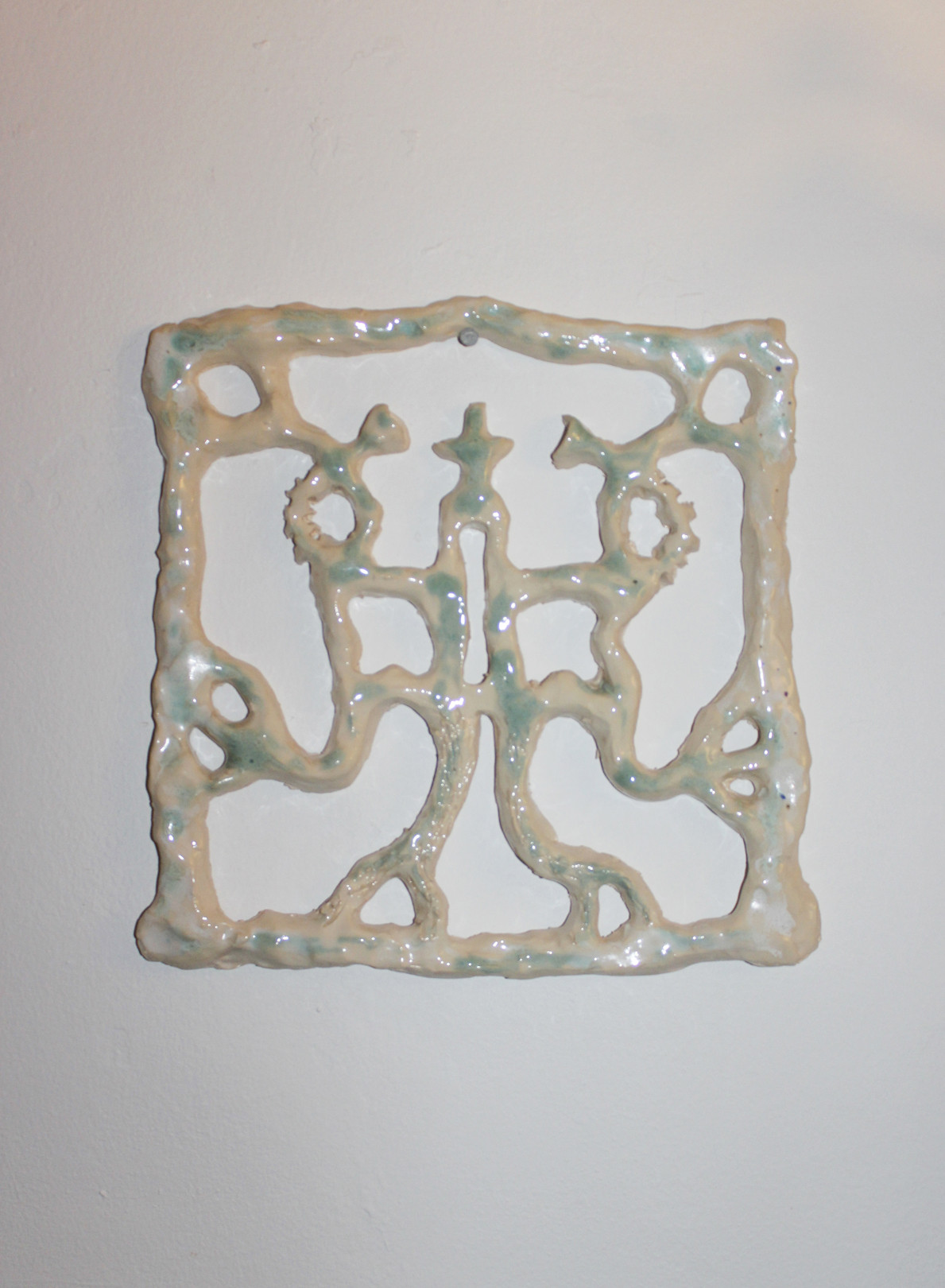Nela Britaňáková↓
Gallery
Studies
| 2019–2022 | Sculpture 2, AVU (Tomáš Hlavina) |
| 2015–2019 | Vysoká škola uměleckoprůmyslová v Praze, Ateliér keramiky a porcelánu |
| 2018 | Sculpture 2, AVU (Tomáš Hlavina) |
| 2017 | Sculpture 1, AVU (Lukáš Rittstein) |
About the work
Mystical Eclipse
The diploma work Mystical Eclipse is a multi-layered project fusing a spatial installation composed of ceramic objects and a group performance. The project builds on my earlier works, mostly performative video projects, which originated during my follow-up master’s program at the Academy of Fine Arts, and became the main draft for the diploma.
The subjects linking the two projects are anthropocentric civilizational attitude and ethical co-existence with the world around us. I employed the issues of neglected non-human forms, animals, plants, and bacteria. Along with reflecting upon the relationship between man and nature, the subjects were based on the ideas of the New Age movement, parapsychological methods, and on seeking personal spirituality in today’s world. In the above-mentioned videos, I examined several approaches to performance, its combination with sculptural objects, and the potential of cooperation. I view the latter as crucial, and I also develop one of the layers of my diploma along its lines.
Nature and living in it have been intrinsic to man since time immemorial. How has this relationship changed and how can we perceive it today? Can we rectify our broken ties with nature? Can we view dance at a rave party as a collective spiritual experience or a contemporary ritual?
The main layer of my diploma is a spatial installation consisting of ceramic objects that either cover the walls or are placed throughout the space. The installation is a metaphor for hybrid biodiversity, a dystopian vision of a fictitious natural world that humans have transformed via their irreversible interventions. Deformed nature in the form of plants and organisms is demonstrated in the installation by mural objects, whose formats defy any attempt to create a natural environment. The objects resemble a fictional herbarium of warped nature, their shapes evoking prehistoric plants or unidentifiable vegetation from the Voynich’s manuscript. The ceramic objects, originally made of wet raw clay, are fixed by firing and subsequently glazed. The moment of firing and “killing” of living matter makes these objects fragile and vulnerable to careless handling, while enhancing the sense of empty boxes or fossils.
Another part of the diploma is an hour-long performance, which will take place in the above-mentioned environment. Five performers and the Adriana Vančová’s music accompaniment represent the installation’s live component. The non-narrative performance blurs the hierarchical principles among the participants. Some of the characters resemble invertebrates, which lie like living objects among the ceramic figures; others use their limbs to examine their surroundings like climbing plants, their stems reaching and holding tight to the nearest branches. A significant component of the performance is the figures representing a human entity. The costumes covering their bodies bear ceramic parts of products of nature and their movements indicate complete detachment from the environment they are in. The unstoppable dance to electronic music evokes a ritual and a failed attempt to interact with the ruins of the nature around.
The project also entails laborious craftsmanship techniques, whether related to making ceramics or sewing costumes. Haptic experience in working with clay has accompanied most of my projects; raw clay and fired ceramics help me convey information and symbolism to viewers. I explore this medium not only in its technological complexity, but also in the context of individual projects and relations to other materials and environments. My oeuvre has been crucially inspired by the works of the ceramicist Helena Johnová, the Art Brut painting of Anna Zemánková, and the spiritualism-influenced Hilma af Klint.

